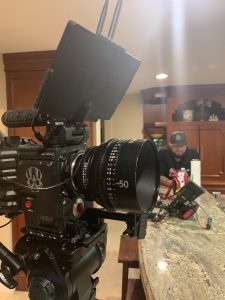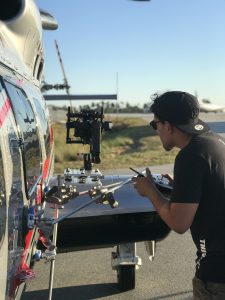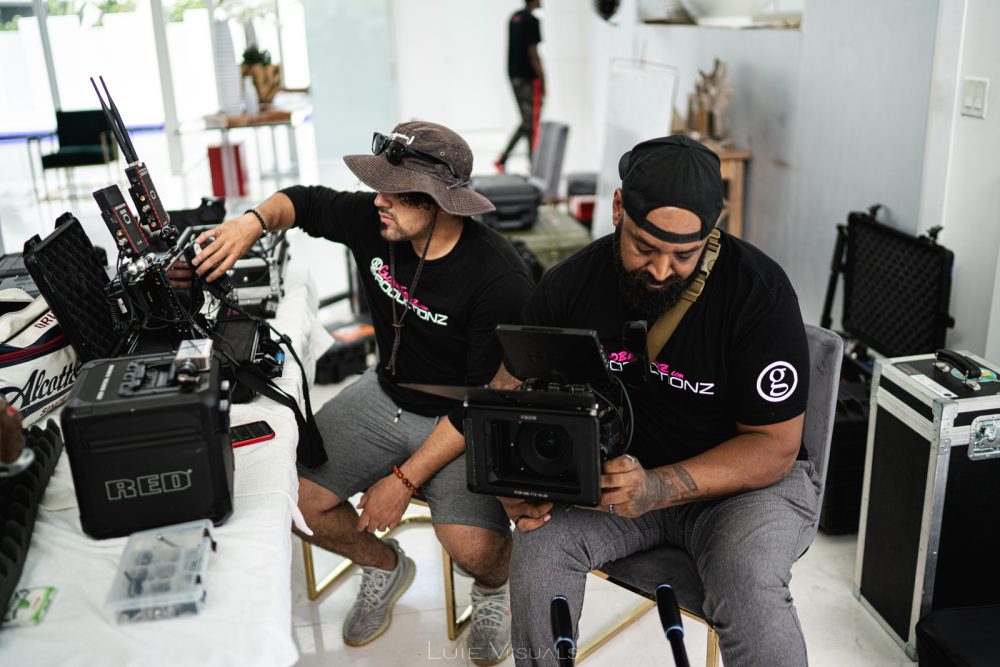
Guide to Choosing how many Cameras to use for your TV Show Production
Guide to Choosing how many Cameras to use for your TV Show Production
Choosing the right number of cameras for your TV show production is a critical decision that can significantly impact the quality, style, and efficiency of your project. Whether you’re producing a talk show, a reality series, a drama, or a live event, the number of cameras you use plays a key role in capturing the action, enhancing visual storytelling, and engaging viewers. In this guide, we’ll explore factors to consider when determining how many cameras to use for your TV show production.
 Format and Genre: The format and genre of your TV show play a crucial role in determining the number of cameras you’ll need. For example, a talk show or news program typically uses multiple cameras to capture different angles, reactions, and close-ups of hosts, guests, and audience members. On the other hand, a scripted drama or sitcom may utilize fewer cameras for controlled setups and planned shots. Consider the pacing, style, and visual requirements of your show’s format and genre to determine the optimal camera setup.
Format and Genre: The format and genre of your TV show play a crucial role in determining the number of cameras you’ll need. For example, a talk show or news program typically uses multiple cameras to capture different angles, reactions, and close-ups of hosts, guests, and audience members. On the other hand, a scripted drama or sitcom may utilize fewer cameras for controlled setups and planned shots. Consider the pacing, style, and visual requirements of your show’s format and genre to determine the optimal camera setup.- Production Budget and Resources: Your production budget and available resources will influence the number of cameras you can afford to use. Multiple cameras offer versatility, coverage, and creative options but also require additional equipment, crew members, and post-production resources. Evaluate your budget constraints, equipment availability, and staffing capabilities to strike a balance between maximizing visual quality and staying within budgetary limits.
- Creative Vision and Storytelling Goals: Consider your creative vision and storytelling goals when deciding how many cameras to use. Determine the desired aesthetic, look, and feel of your TV show, and assess how multiple cameras can contribute to achieving that vision. Multiple cameras allow for dynamic shots, smooth transitions, and immersive experiences, enhancing audience engagement and visual impact. Identify key scenes, sequences, and moments that can benefit from multi-camera setups to elevate storytelling and capture compelling visuals.
- Production Scale and Complexity: The scale and complexity of your TV show production will also influence the number of cameras you’ll need. Larger-scale productions, such as live events, concerts, or reality competitions, often require multiple cameras to cover expansive spaces, multiple performers, and audience reactions. Conversely, smaller-scale productions, such as interviews, documentaries, or scripted scenes, may require fewer cameras for intimate settings and controlled environments. Assess the production scale, logistical challenges, and technical requirements to determine the appropriate camera setup.
- Live vs. Recorded Productions: Consider whether your TV show will be produced live or recorded, as this will impact your camera requirements. Live productions typically benefit from multiple cameras to capture real-time action, reactions, and audience interactions. Multiple camera angles can enhance live broadcasts, create dynamic visuals, and provide flexibility for directors and editors. Recorded productions, such as scripted dramas or pre-recorded segments, may have more flexibility in camera setups but still benefit from multiple cameras for coverage, continuity, and visual variety.
 Directorial Style and Technical Expertise: Your directorial style and technical expertise also play a role in determining camera usage. Experienced directors and cinematographers may leverage multiple cameras to achieve specific shots, angles, and sequences, showcasing their creative vision and expertise. Consider the skill level and experience of your production team, as well as their familiarity with multi-camera setups and operations, to ensure smooth execution and optimal results.
Directorial Style and Technical Expertise: Your directorial style and technical expertise also play a role in determining camera usage. Experienced directors and cinematographers may leverage multiple cameras to achieve specific shots, angles, and sequences, showcasing their creative vision and expertise. Consider the skill level and experience of your production team, as well as their familiarity with multi-camera setups and operations, to ensure smooth execution and optimal results.- Audience Engagement and Production Value: Ultimately, the number of cameras you use should align with your goals for audience engagement and production value. Multiple cameras can enhance production value, create immersive experiences, and capture dynamic visuals that captivate viewers. Consider the viewer experience, audience expectations, and industry standards when deciding on camera setups to deliver a high-quality, engaging TV show that meets or exceeds audience expectations.
In conclusion, choosing how many cameras to use for your TV show production involves evaluating factors such as format and genre, production budget and resources, creative vision and storytelling goals, production scale and complexity, live vs. recorded productions, directorial style and technical expertise, and audience engagement and production value. By carefully considering these factors and balancing visual quality, creativity, and practicality, you can determine the optimal camera setup that enhances your TV show’s visual storytelling, engages viewers, and elevates the overall production quality.




 Format and Genre: The format and genre of your
Format and Genre: The format and genre of your  Directorial Style and Technical Expertise: Your directorial style and technical expertise also play a role in determining camera usage. Experienced directors and cinematographers may leverage multiple cameras to achieve specific shots, angles, and sequences, showcasing their creative vision and expertise. Consider the skill level and experience of your production team, as well as their familiarity with multi-camera setups and operations, to ensure smooth execution and optimal results.
Directorial Style and Technical Expertise: Your directorial style and technical expertise also play a role in determining camera usage. Experienced directors and cinematographers may leverage multiple cameras to achieve specific shots, angles, and sequences, showcasing their creative vision and expertise. Consider the skill level and experience of your production team, as well as their familiarity with multi-camera setups and operations, to ensure smooth execution and optimal results.

